Boosting the power output of your solar panels is truly a win-win scenario. Firstly, it helps you get the most out of your initial investment. After all, when you install solar panels, the aim is to generate as much electricity as you can from the sunlight available.
So, by making your panels more powerful, you’re essentially getting more bang for your buck. Secondly, the more power your panels generate, the less you have to rely on electricity from the grid. This can lead to significant savings on your energy bills.
So here are 13 insider trade secrets to get your solar panels powered up:
- Solar Panel Positioning
- Periodic Cleaning
- Solar Panel Cooling
- Use of Solar Trackers
- Power Optimizers
- Adding Concentrators
- Use of Anti-Reflective Coating
- Optimize Energy Consumption
- Remove Obstructions
- Use of Solar Inverters
- Regular Maintenance
- Add More Panels
- Panel Upgrade
And of course, it’s not just about money – by maximizing your solar power, you’re also increasing your contribution to renewable energy use, which is fantastic for the environment. It’s all about efficiency, cost-effectiveness, and sustainability.
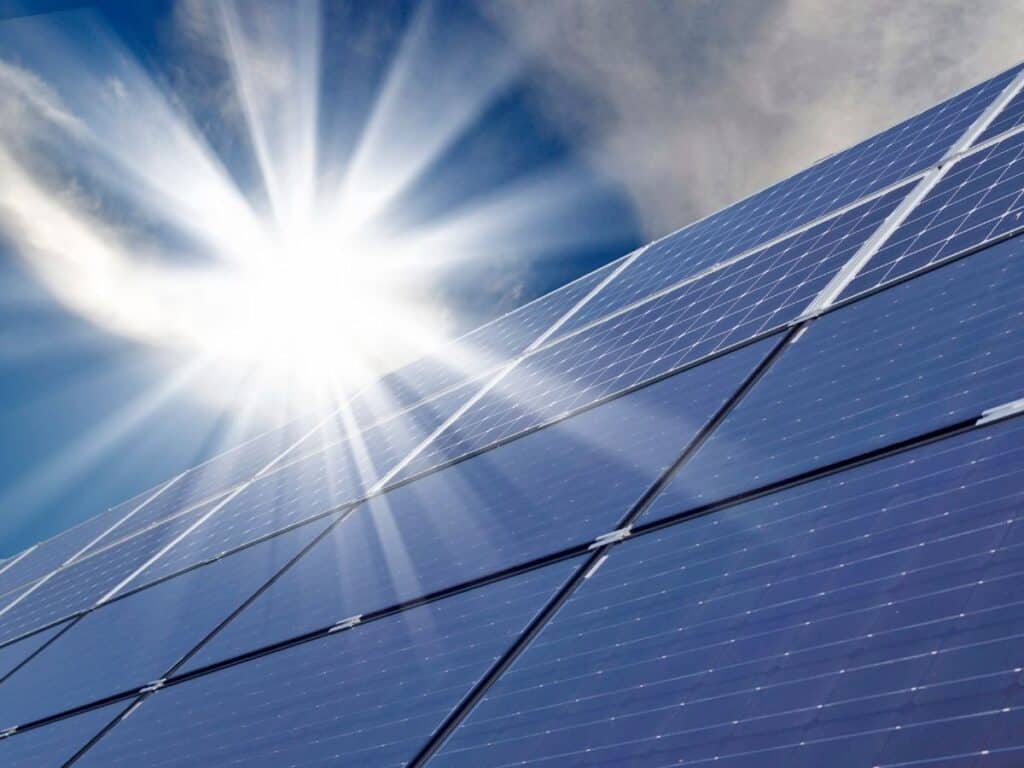
Let’s now dig into each one of these so that you can implement them in your solar panel installation…
1. Positioning Your Solar Panels To Make Them More Powerful
The strategic positioning of solar panels plays an instrumental role in their efficiency and power output. Optimal positioning means the solar panels are exposed to the maximum possible sunlight throughout the day, thus maximizing their power generation capability.
In the Northern Hemisphere, solar panels should ideally face true south, while in the Southern Hemisphere, they should face true north.
This positioning ensures the panels receive the highest amount of sunlight over the course of the day as the sun traverses from east to west.
The angle or tilt of the solar panels is another critical factor that can significantly affect their performance.
This angle should ideally be set to approximate the latitude of the location where the panels are installed.
For instance, if the solar panels are being installed at a location that is 35 degrees north of the equator, the panels should ideally be tilted at an angle of about 35 degrees facing south.
This inclination angle is designed to maximize the exposure of the panels to the sun when it is at its highest point in the sky, a time known as solar noon, which is when the potential for power generation is greatest.
Solar panels tend to be most efficient when they are perpendicular to the incoming sunlight. As such, adjustments may need to be made to the angle of the panels based on the changing position of the sun throughout the year.
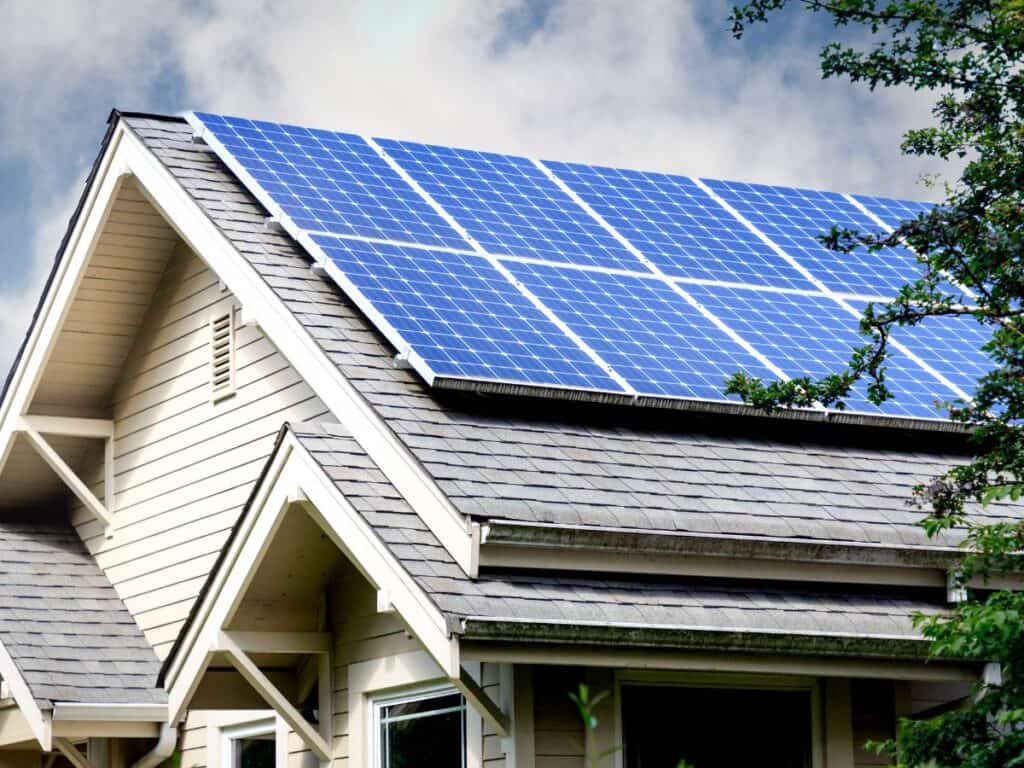
During the summer, when the sun is higher in the sky, the tilt angle should be reduced.
Conversely, in the winter, when the sun is lower in the sky, the tilt angle should be increased. Some solar installations incorporate adjustable racking systems that allow for these changes in tilt to be made easily.
Apart from tilt and orientation, ensuring that the panels are placed in a location free from shading is vital. Obstructions such as trees, buildings, or other structures can cast shadows on the panels, significantly reducing their efficiency and overall power output.
As much as possible, solar panels should be installed in open areas where there are minimal obstructions blocking the sun.
While there are general guidelines to follow, specific conditions of a given location should be taken into account when installing solar panels, ensuring that the solar panels yield maximum power output and deliver optimal efficiency.
2. Periodic Cleaning Of Your Solar Panels Increase Their Power Output
The next thing you can do is maintain a regular cleaning routine. This is an essential aspect of maximizing the efficiency and power output of your solar panels.
Over time, dust, pollen, bird droppings, leaves, and other debris can accumulate on the panels’ surface, leading to a layer of grime that blocks sunlight and reduces the system’s effectiveness.
Generally, it’s advisable to inspect your solar panels every few months to assess if cleaning is needed. However, the frequency of required cleaning can depend on your local environment and climate. For instance, if you live in a dusty area or an area with heavy foliage, your panels may require more frequent cleaning.
To start cleaning, you typically need a soft brush or a squeegee with a long handle, a cloth, and a bucket of soapy water (a diluted vinegar solution can be used to clean solar panels too).
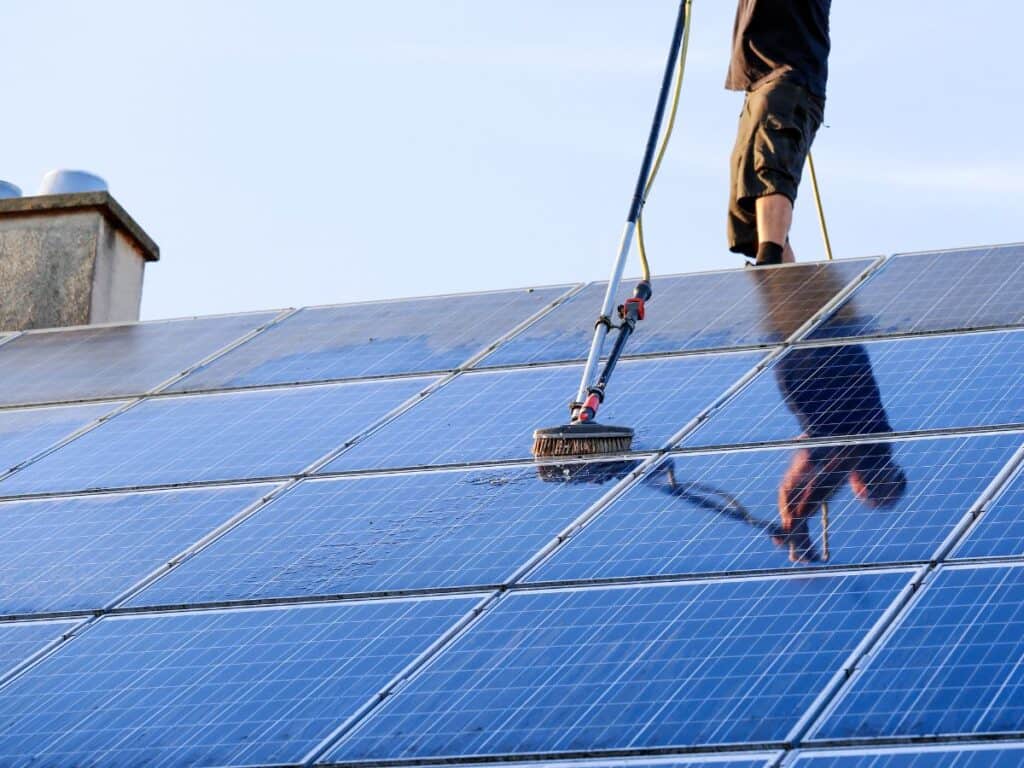
Always remember to check the manufacturer’s guidelines for any specific instructions before you begin the cleaning process.
Most of the time, a gentle cleaning using the brush or squeegee and soapy water will suffice. It’s vital to use gentle cleaning methods to avoid scratching the panel’s surface, which could impair its function.
Another key point to remember is to clean the panels either early in the morning, in the evening, or on a cool day to avoid rapid evaporation of the water, which could leave streaks.
If possible, avoid cleaning on a hot day because the sudden temperature change caused by the cold water could damage the panels.
For safety reasons, it’s often best to perform the cleaning from the ground using a long-handled tool, particularly if your panels are installed on a roof.
If climbing on the roof is necessary, consider hiring a professional cleaning service to avoid any potential risk of injury or damage to the panels.
Moreover, in some regions, rain might do the job for you, naturally cleaning the panels. However, in other places with infrequent rainfall or with a high level of air pollution that could leave residues on the panels, manual cleaning becomes necessary.
Finally, consider investing in automatic cleaning systems if you live in a particularly dusty area, or if your panels are hard to reach.
These systems spray water on the panels, much like a sprinkler system, helping maintain their cleanliness with minimal effort on your part.
By keeping your panels clean and free of debris, you’ll ensure that the maximum amount of sunlight is able to reach your panels, thereby optimizing their power output.
3. Keep Your Solar Panels Cool To Make Them More Powerful
Maintaining a lower temperature in your solar panels can significantly improve their power output and longevity.
Solar panels, like other electronic devices, are more efficient when they are cooler.
Under high temperatures, the efficiency of solar panels can decrease due to the physical properties of the semiconductors used in the photovoltaic cells.
This phenomenon is called the temperature coefficient, which specifies how much the power output will reduce for each degree Celsius above a reference temperature, typically 25°C (77°F).
The primary way to keep solar panels cool is through adequate ventilation. Solar panels should be installed in a way that allows air to circulate beneath them, helping to dissipate the heat they generate.
This is particularly important for panels installed on roofs, where a gap should be left between the roof surface and the panel to allow for airflow.
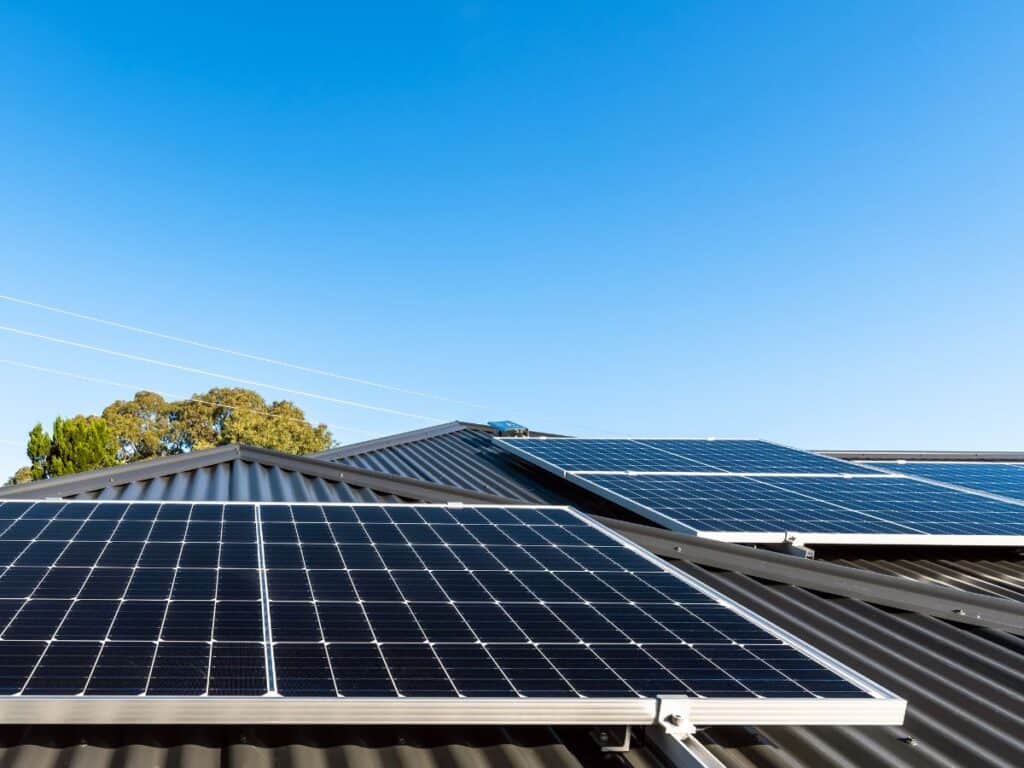
Additionally, choosing light-colored or reflective roofing materials can reduce the amount of heat absorbed and radiated back to the panels.
Another method is to use cooling systems that employ water or other liquids. One such system is the PV/T (Photovoltaic/Thermal) system, which combines solar thermal collectors with photovoltaic panels.
These systems circulate water or a coolant liquid behind the panels, absorbing heat and carrying it away, thus keeping the panel temperature lower.
The heated water can also be used for household purposes, increasing the overall efficiency of the system.
In addition to these, some recent technological advancements propose innovative cooling solutions. For example, thermally conductive materials can be used in the construction of the panels to facilitate better heat dissipation.
Nanotechnology coatings are also being developed that could improve the panels’ ability to radiate heat away into the surrounding environment.
However, these cooling methods require careful consideration as they add complexity and costs to the solar panel system. For example, water-cooling systems need additional components like pipes and pumps, and they also consume some energy to operate.
Therefore, such measures are usually more appropriate in regions with high solar irradiance and high average temperatures, where the benefits from increased efficiency outweigh the additional costs and complexity.
Keeping your solar panels cool can significantly enhance their power output, ensuring you get the maximum energy yield from your system.
Whether through passive methods like allowing for good airflow, or active methods such as water cooling systems, managing the temperature of your solar panels is a viable strategy to increase their efficiency and lifespan, thus making your solar investment even more valuable.
4. Use solar trackers to make your solar panels more powerful
The use of solar trackers can significantly enhance the power output of your solar panels by optimizing their exposure to sunlight throughout the day.
What is a solar tracker?
Solar trackers are advanced mechanical devices that automatically adjust the orientation of solar panels to follow the sun’s path across the sky. This continual adjustment ensures that the solar panels maintain an optimal angle of incidence with respect to the sun, remaining as perpendicular as possible to the sunlight, which results in increased solar energy absorption and, consequently, higher electricity generation.
Solar trackers can be single-axis or dual-axis. Single-axis trackers follow the sun’s movement from east to west throughout the day, which can increase energy output by up to 25% compared to stationary solar panels.
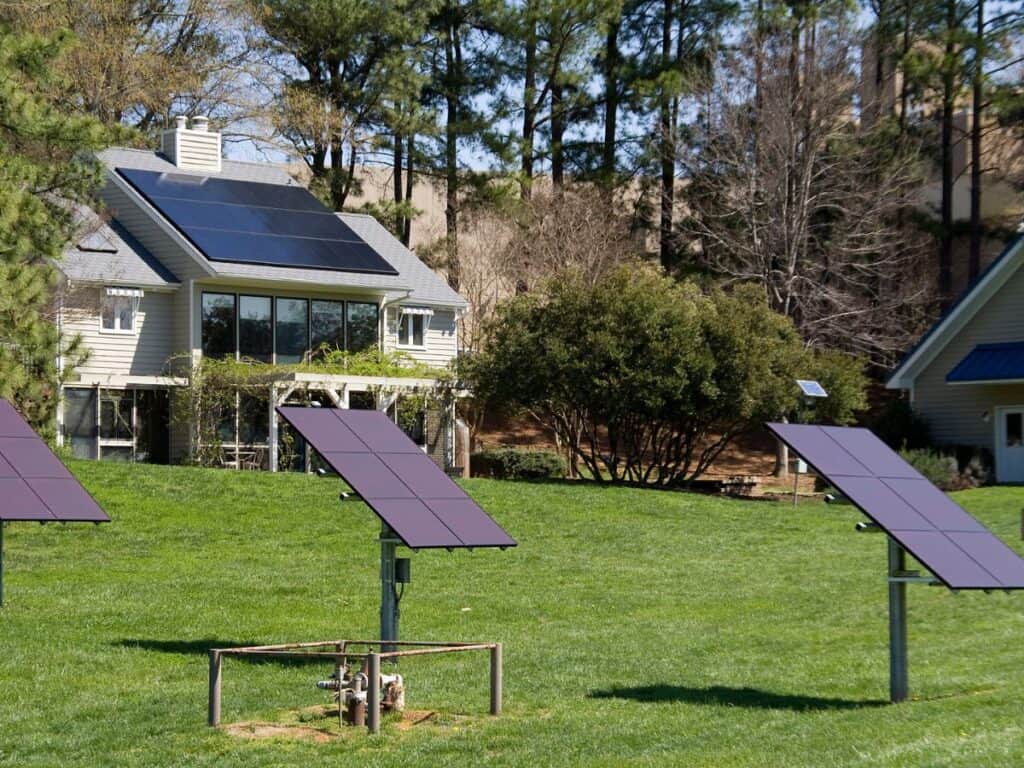
Dual-axis trackers, on the other hand, adjust both east-west and north-south, following the sun’s daily path and seasonal declination.
These can increase energy production by up to 40% compared to stationary panels, making them highly beneficial in regions with high solar irradiance.
The implementation of solar trackers, however, involves more complexity and cost than stationary systems. They require additional space for operation, a more robust infrastructure to support the moving panels, and more maintenance due to the mechanical nature of the system.
Furthermore, solar trackers use a small amount of the generated electricity to power their motors and control systems. Therefore, the decision to use solar trackers should be based on a careful cost-benefit analysis, taking into consideration the site-specific solar irradiance and financial factors.
Despite these challenges, solar trackers can substantially improve the productivity of solar panels in the right circumstances.
By actively following the sun, these dynamic systems maximize the duration and intensity of sunlight striking the panels, thereby optimizing energy generation.
This means that for the same number of panels, you can produce more power compared to stationary systems.
Solar trackers are an excellent tool for boosting the performance of your solar panels, especially in areas with high solar potential.
By ensuring the panels always face the sun at the optimal angle, these devices allow for greater energy production, contributing to improved power output, greater efficiency, and higher return on investment from your solar installation.
It’s for this reason that the use of solar trackers is a practical method to increase the power of your solar panels and make your renewable energy system even more effective.
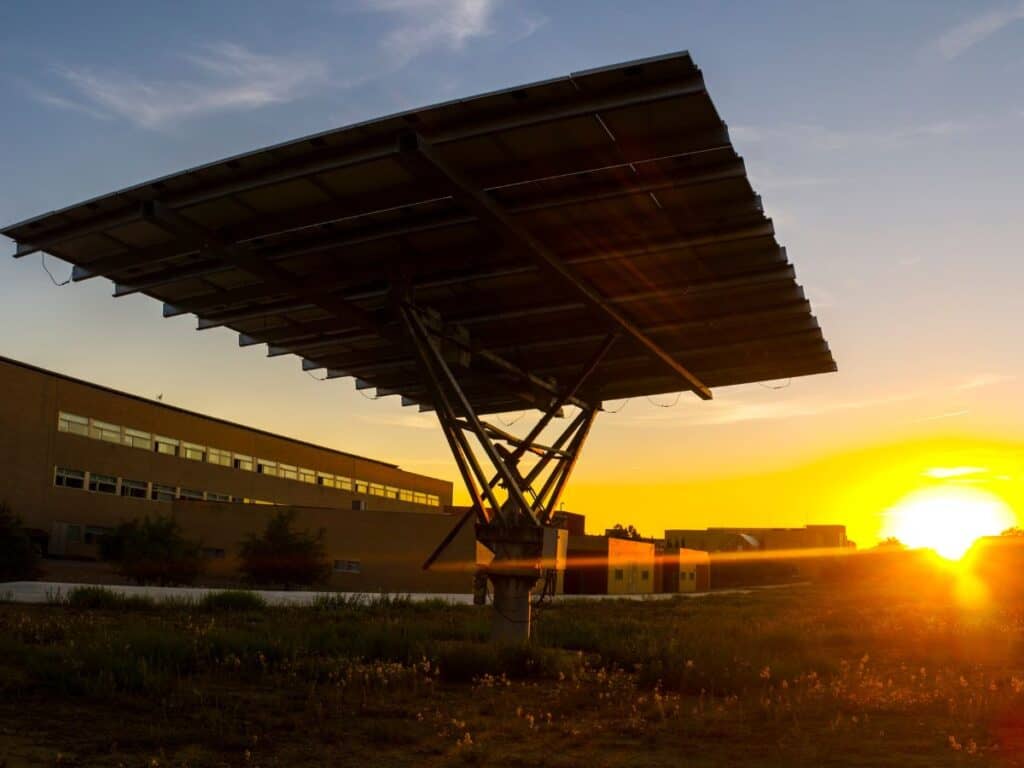
5. Use a power optimizer to make your solar panels more powerful
A power optimizer is a device that increases the efficiency and performance of a solar power system.
What is a power optimizer I hear you ask…
It is a type of Module-Level Power Electronics (MLPE) technology, and its primary function is to maximize the energy harvest from each individual solar panel, regardless of the performance of other panels in the system. By doing so, power optimizers can effectively boost the overall power output of your solar panels.
In a traditional solar panel setup, all panels are connected in a series, forming what is known as a “string”.
In this configuration, if one panel underperforms due to shading, soiling, or a malfunction, the performance of the entire string is compromised.
This is due to the fact that the current in a string is dictated by the least performing panel, somewhat akin to how the weakest link in a chain determines the chain’s overall strength.
A power optimizer, however, mitigates this issue. Installed at the back of each solar panel, a power optimizer conditions the direct current (DC) output from each individual panel, typically by adjusting the voltage and current.
This ensures that each panel operates at its maximum power point, irrespective of how the others are performing. Thus, if one panel is shaded or underperforming, it doesn’t affect the rest of the system.
In addition to optimizing power output, power optimizers also provide safety features such as panel-level disconnect, and monitoring capabilities to track the performance of individual panels.
This can be particularly useful in identifying any issues with your solar panels and addressing them promptly, ensuring your system continues to operate at its best.
Power optimizers are connected to a string inverter that converts the optimized DC power into alternating current (AC) suitable for use in the home or feeding back into the grid.
This hybrid system combines the advantages of both string inverters and microinverters, offering higher efficiency and flexibility at a lower cost than a system with microinverters.
Power optimizers can greatly enhance the performance of your solar panels by ensuring each panel operates at its maximum power point.
They provide an efficient solution to potential power loss due to shading or panel mismatch and offer valuable insights into your system’s performance.
By incorporating power optimizers into your solar setup, you can effectively increase the power output of your solar panels, ensuring you harness the maximum possible solar energy from your system.
6. Adding concentrators to make your solar panels more powerful
The addition of concentrators to a solar panel system can significantly increase its power output and overall efficiency.
But what is a solar concentrator…
Solar concentrators, often referred to as Concentrated Photovoltaic (CPV) systems, work by focusing sunlight onto a small area of high-efficiency solar cells using lenses or mirrors. This way, they can harness more sunlight using a smaller quantity of photovoltaic material, which can be advantageous considering that high-efficiency solar cells are often more expensive than conventional ones.
Concentrated photovoltaic systems can be categorized into low, medium, and high concentration, based on the amount of sunlight they focus onto the solar cells.
High concentration CPV systems, for instance, can concentrate sunlight by several hundred or even a thousand times its normal intensity.
This extreme concentration of sunlight results in a substantial increase in the amount of electricity that can be produced per unit area of solar cell.
The concentrators in a CPV system also move to track the sun’s position throughout the day, ensuring that the sunlight remains focused on the small photovoltaic area.
This sun-tracking feature enhances the system’s power output, as it maximizes the amount of sunlight that can be concentrated onto the solar cells throughout the day.
However, CPV systems come with their own set of challenges. Due to their high concentration of sunlight, these systems generate a lot of heat, which needs to be managed efficiently to prevent damage to the solar cells and to maintain optimal performance.
This is usually done using advanced heat dissipation techniques or active cooling systems.
Additionally, the lenses or mirrors used in CPV systems require regular cleaning to ensure they can effectively focus sunlight onto the solar cells.
The cost and complexity of CPV systems are generally higher compared to conventional photovoltaic systems, due to the need for sun-tracking mechanisms and cooling systems, as well as the use of high-efficiency solar cells.
Because of that, CPV systems are often more suited to regions with high direct sunlight (high solar irradiance), where the increased power output can justify the additional cost and complexity.
In a nutshell, adding concentrators to your solar panels is a potential method to significantly increase their power output.
These advanced systems can harness more sunlight using less photovoltaic material, leading to a higher energy yield and improved efficiency.
While they do involve greater cost and complexity, in areas with high solar irradiance, the enhanced power generation can make this a worthwhile investment.
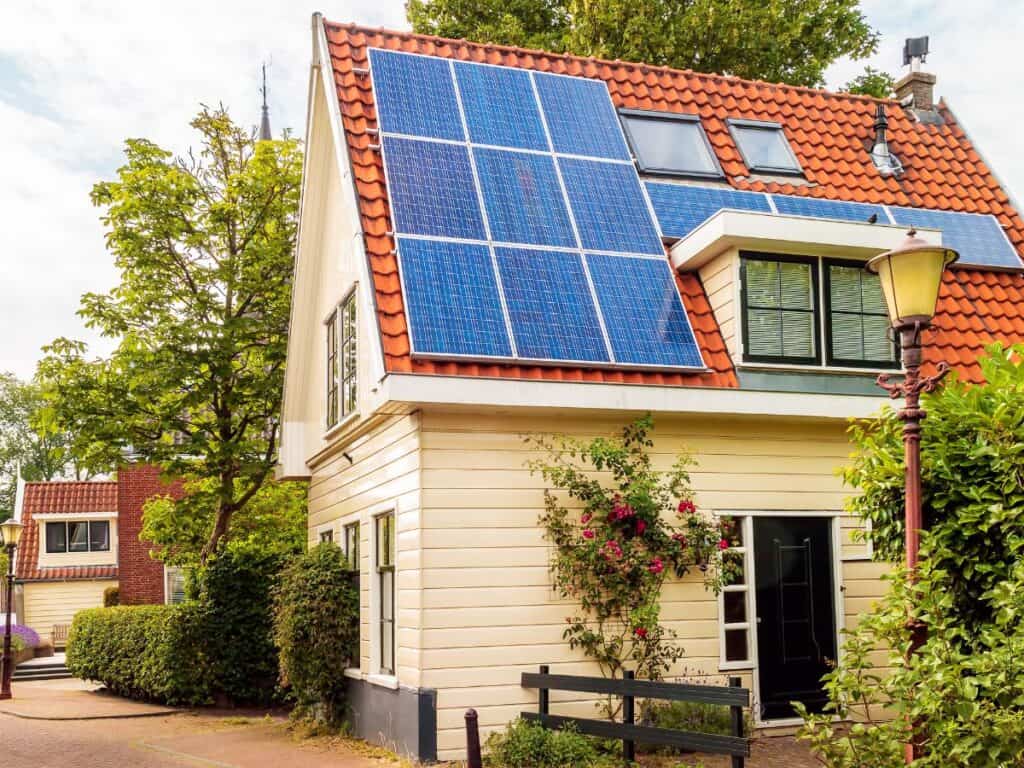
Let’s now look at adding an anti-reflective coating to your solar panels…
7. Use an anti-reflective coating on your solar panels to make them more powerful
The application of an anti-reflective coating on your solar panels can significantly enhance their power output and overall efficiency.
But how does and anti-reflective coating on solar panels work?
An anti-reflective coating reduces the amount of light that gets reflected off the surface of the solar panel. In doing so, it ensures that a greater proportion of sunlight is absorbed by the solar cells, leading to increased power generation.
The principle behind this is rooted in the fundamental property of light and its interaction with different surfaces.
When light encounters a change in medium – such as from air to glass, which is commonly used in solar panel construction – some of the light is reflected back, while the rest is transmitted through.
This reflected light represents a loss in potential energy that could be converted into electricity by the photovoltaic cells within the panel.
An anti-reflective coating works by minimizing this reflection. It’s typically a thin layer of dielectric material that is applied to the surface of the solar panel’s glass cover.
The thickness and refractive index of this coating are carefully engineered such that the reflected light waves from the top and bottom surfaces of the coating interfere destructively.
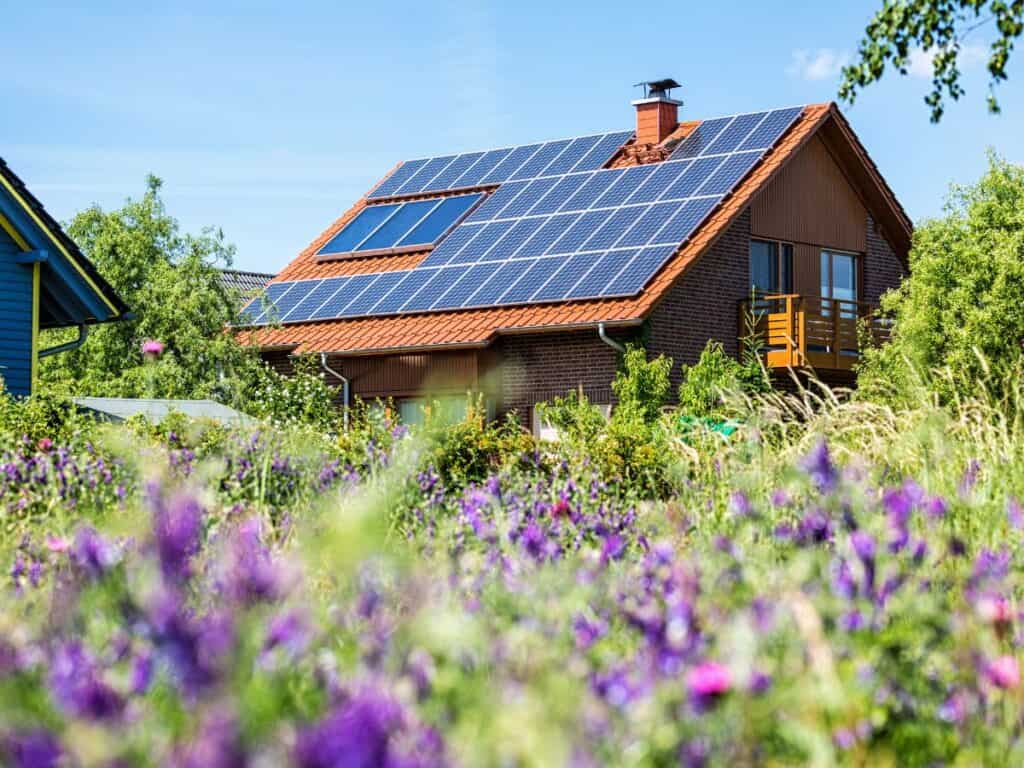
This cancels out the light reflection and hence increases the amount of light transmitted through the coating and into the solar cells.
By reducing reflection and maximizing light absorption, an anti-reflective coating can significantly increase a solar panel’s power output.
This is particularly beneficial in the early morning, late afternoon, and on cloudy days when the sunlight is at an oblique angle, leading to higher reflection.
Aside from enhancing power output, anti-reflective coatings also offer the added benefit of reducing soiling.
Panels treated with anti-reflective coatings have been found to attract less dust and dirt, thereby maintaining optimal light absorption and reducing the need for frequent cleaning.
Applying an anti-reflective coating to your solar panels can effectively increase their power output by reducing light reflection and maximizing light absorption by the solar cells.
It is a proven technology that not only improves the efficiency of solar energy generation but also helps maintain the cleanliness of your panels.
By incorporating an anti-reflective coating, you can ensure your solar panels operate at their full potential, providing a more reliable and efficient source of renewable energy.
Another way to increase your solar panel’s out put is to optimize your energy consumption…
8. How to optimize energy consumption to make your solar panels more powerful
While the power output of your solar panels is largely dependent on factors such as their positioning, cleanliness, and temperature, optimizing your home’s energy consumption can also contribute to effectively harnessing the power of your solar system.
The essence of this lies in aligning your highest energy consumption with peak solar production times, improving energy efficiency, and leveraging the benefits of energy storage.
A solar power system typically produces the most electricity in the middle of the day when the sun is at its highest.
Consequently, running energy-intensive appliances like dishwashers, washing machines, and air conditioning units during these peak production times can maximize the use of solar energy directly, reducing your reliance on grid electricity and potentially saving you money.
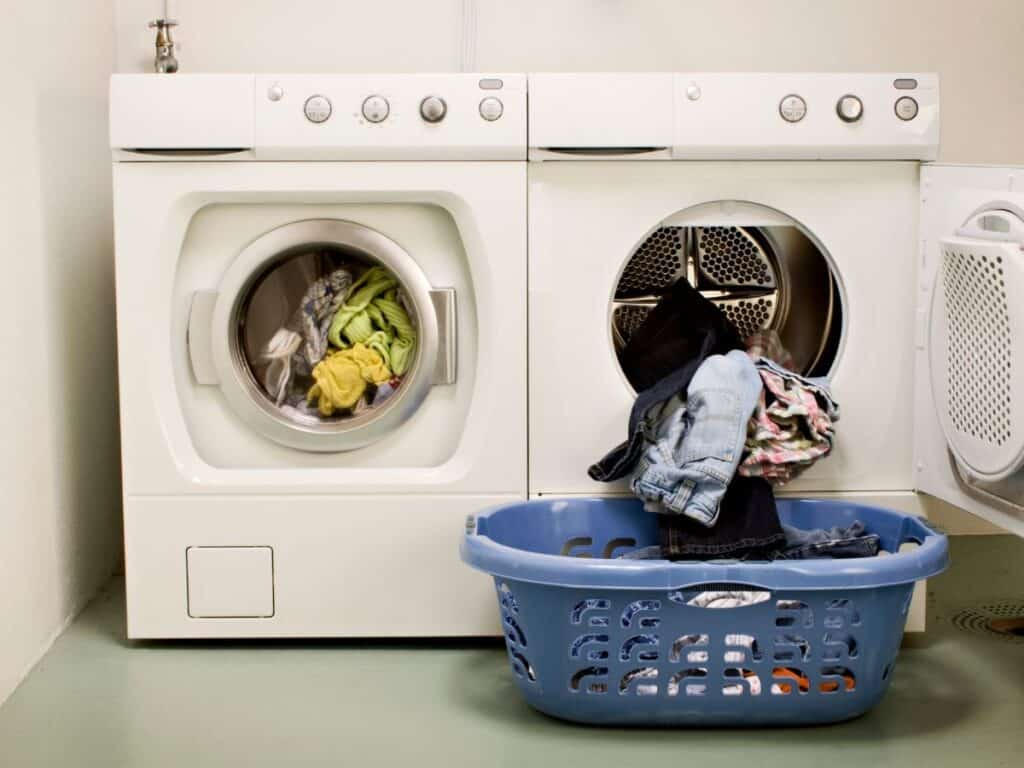
Energy efficiency is another crucial aspect of optimizing your home for solar power. By using energy-efficient appliances and implementing energy-saving habits, such as turning off lights when not in use, you can reduce your overall electricity consumption.
This allows you to meet a larger proportion of your energy needs with your solar panels, increasing their effective power output relative to your consumption.
Adding an energy storage system, or battery, to your solar panel system can also greatly optimize your energy consumption.
Battery storage allows you to store excess solar power produced during the day for use during the night or during cloudy or rainy periods when solar production is low.
This not only maximizes your use of the solar energy produced but also provides a backup power source in case of grid outages.
The good news is smart home technologies can automate these processes.
For example, smart thermostats can adjust your heating and cooling based on when you’re home and what the weather is like, optimizing your energy usage.
Similarly, energy monitoring systems can provide insights into your power consumption patterns, helping you identify areas where energy use can be reduced.
Lastly, participating in a net metering program, if available in your region, allows you to feed excess solar energy back to the grid. This earns you credits on your electricity bill, effectively “storing” your excess power in the grid for later use.
By aligning your high power usage with peak solar production, improving energy efficiency, utilizing energy storage, and leveraging smart technologies, you can optimize your energy consumption to effectively increase the power of your solar panels.
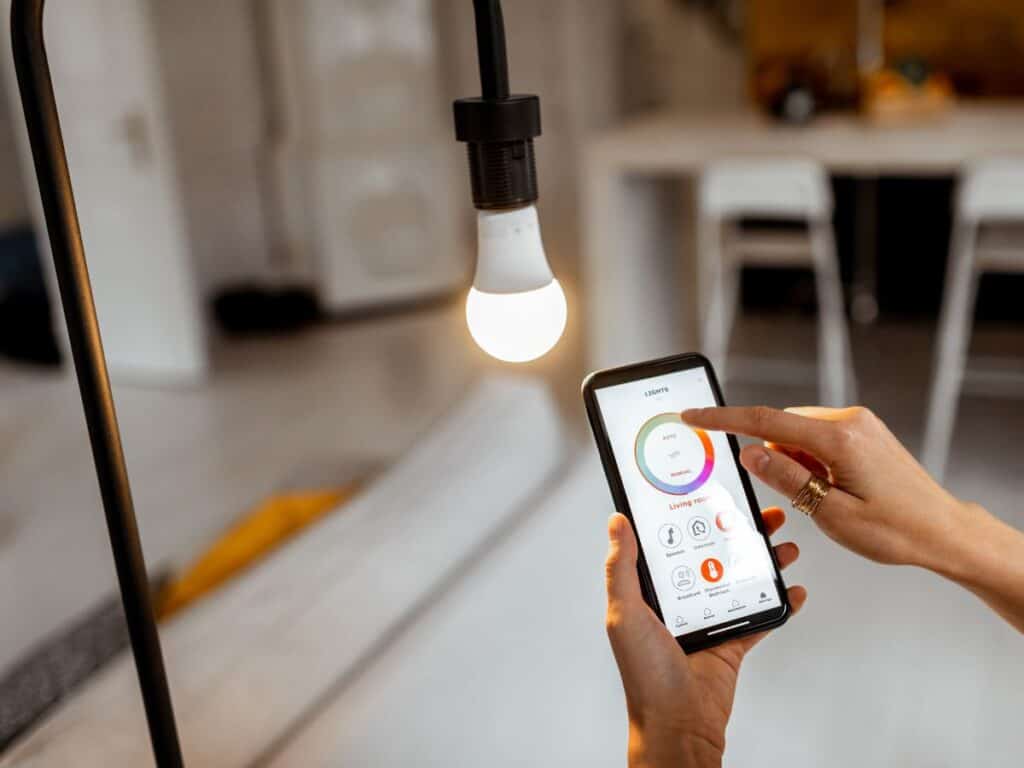
These strategies will ensure you make the most of your solar energy system, providing a reliable, sustainable, and cost-effective power source for your home.
9. Remove obstructions from your solar panels
This may sound obvious but ensuring that your solar panels are free from obstructions is crucial to their performance and power output.
What obstructions impact your solar panel’s power production your ask?
Obstructions can take several forms, including physical debris, shading from nearby structures or trees, and even accumulated dirt and dust on the surface of the panels. Each of these can significantly reduce the amount of sunlight that reaches your solar cells, thus limiting their ability to generate electricity.
Physical debris such as leaves, twigs, or bird droppings can block sunlight from reaching parts of your solar panels.
Regular inspection and removal of such debris are essential to keep your panels working optimally.
This could involve a simple brushing off of the debris or, in some cases, a more thorough cleaning with appropriate equipment and cleaning solutions.
Shading is another major form of obstruction that can significantly impact your solar panels’ power output.
Solar panels operate as a series, meaning that if one panel is shaded, it can reduce the output of the entire string.
If your panels are shaded for a portion of the day by nearby structures or vegetation, it’s essential to address this issue.
This might involve trimming back trees or even relocating the panels if shading is substantial and unavoidable.
Dirt and dust, while less obvious than shading or physical debris, can also obstruct your solar panels over time.
Particles of dust or pollution can settle on the surface of your panels, forming a thin film that reduces their efficiency.
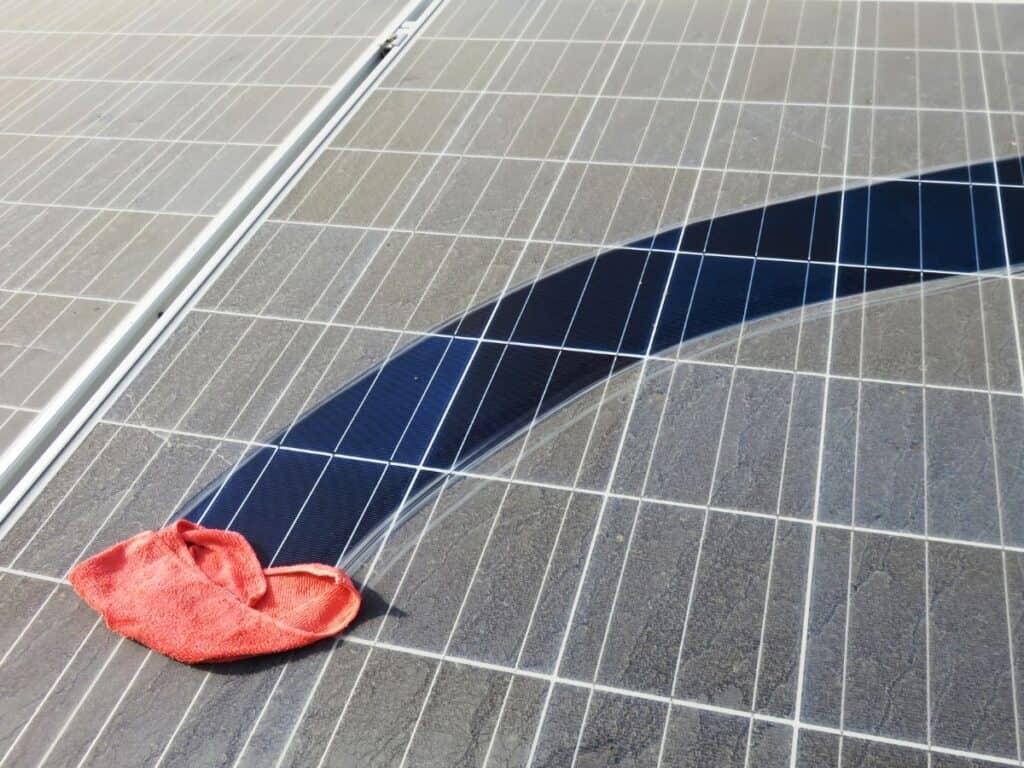
Regular cleaning, typically with water and a soft brush or cloth, can help keep your panels free from this type of obstruction.
Addressing these obstructions is not just about maintaining your current power output, but can also increase it.
A fully unobstructed solar panel will capture more sunlight, and thus generate more electricity, than a panel that’s partially shaded or dirty.
The impact of obstructions on your solar panels’ performance can be substantial.
A shaded or dirty solar panel can see a reduction in output of 20% or more, while a panel covered by leaves or other debris could be rendered almost completely ineffective.
Therefore, the potential gains from removing these obstructions are considerable.
Removing obstructions from your solar panels is a key step toward maximizing their power output.
Regular inspection and maintenance will ensure that your panels remain free from physical debris, shading, and dirt, enabling them to capture the maximum amount of sunlight and generate as much electricity as possible.
Not only will this increase the power output of your panels, but it will also contribute to a longer lifespan and a better return on your solar investment.
10. How to use solar inverters to increase your solar panel’s power output
The use of solar inverters plays a crucial role in harnessing the full potential of solar panels, significantly influencing the power output and overall efficiency of the solar energy system.
Before I dig into why that is, let’s look at what a solar inverter does…
A solar inverter’s primary function is to convert the direct current (DC) produced by the solar panels into alternating current (AC), which is the form of electricity used in most homes and businesses, and which can be fed into the electrical grid.
The type and quality of the inverter can directly impact the performance of your solar system.
Traditional string inverters, which connect a series or “string” of solar panels together, can sometimes limit power output.
If one panel in the string is shaded or underperforming, it can reduce the output of the entire string. To overcome this, you can use microinverters or power optimizers.
Microinverters are installed on each individual solar panel. They convert the DC electricity to AC right at the panel, which means that the performance of each panel doesn’t affect the others.
This is particularly useful for installations where panels may experience varying levels of sunlight due to shading or orientation.
Power optimizers, similar to microinverters, are also installed at each panel. However, they condition the DC electricity and send it to a central inverter for conversion to AC.
Both of these technologies, known as Module-Level Power Electronics (MLPE), can increase energy yield and provide monitoring capabilities to keep track of each panel’s performance.
Modern inverters also come equipped with Maximum Power Point Tracking (MPPT) technology, which continuously optimizes the conversion of DC to AC based on varying conditions, such as changes in sunlight intensity and temperature.
This ensures that the solar panels operate at their maximum power output under different conditions, thus increasing the overall efficiency and power generation of your solar system.
Moreover, many new inverters provide smart grid capabilities, like demand response, reactive power support, and energy management, which can enhance the overall efficiency of not just your solar power system but the entire power grid.
The choice of solar inverter can greatly impact the power output of your solar panels.
By choosing a quality inverter or utilizing MLPE technology, you can maximize the power production of each panel, increase the efficiency of the energy conversion process, and optimize the operation of your solar system under different conditions.
A high-performing solar inverter is a critical component in ensuring your solar energy system generates as much power as possible.
The next point is simple to do in theory but so many people neglect doing it in reality…
11. Regular Maintenance to power up your solar panels
Regular maintenance of your solar panels is essential to ensure they remain in optimal working condition and continue to deliver maximum power output.
While solar panels are generally low-maintenance devices, there are several key aspects to consider to ensure their efficiency and longevity.
Firstly, routine inspections are crucial. These involve visually checking your solar panels for any noticeable issues such as cracks, discoloration, or defects that may arise from wear and tear or extreme weather conditions.
Over time, these could affect the panels’ ability to effectively convert sunlight into electricity.
Secondly, as part of the inspection process, you should also verify that all electrical connections and wiring are intact and that there are no signs of fraying, corrosion, or damage.
Problems with the electrical components can affect the energy transfer and overall system performance. If any issues are detected, they should be addressed by a professional solar technician to ensure the safety and efficacy of the repairs.
Thirdly, maintaining the cleanliness of your solar panels can greatly enhance their performance.
As previously discussed, dust, bird droppings, leaves, and other forms of debris can create a layer of dirt that obstructs sunlight from reaching the photovoltaic cells in the panel, thereby decreasing their power generation capacity.
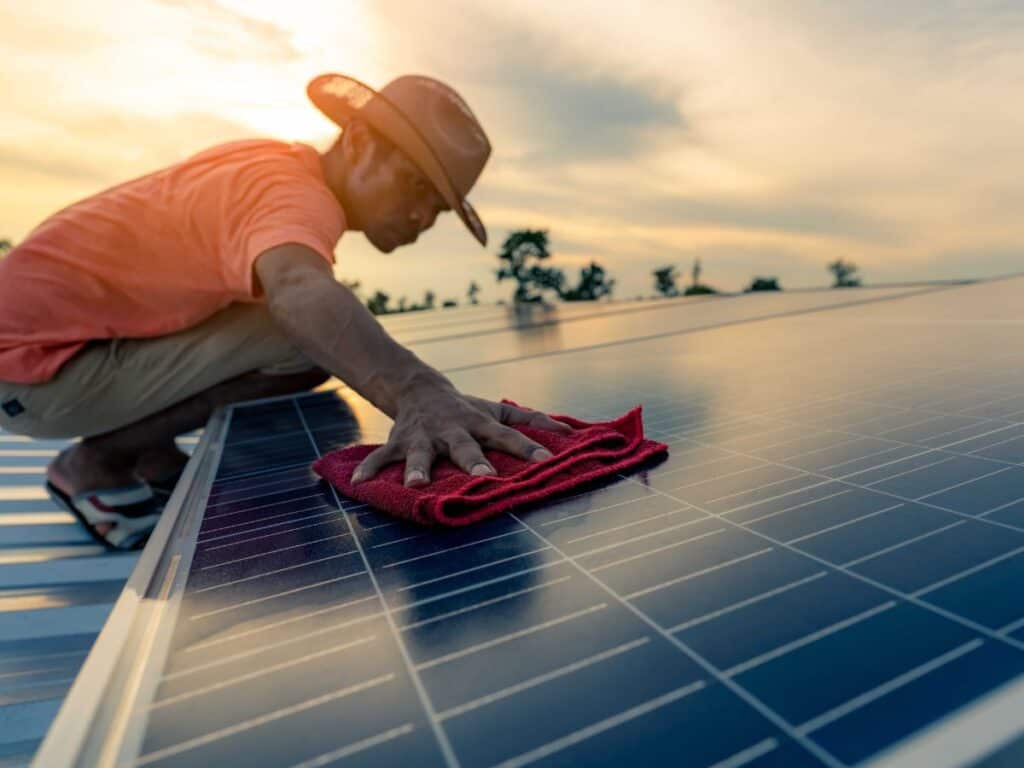
Cleaning should be done with care, using water and a soft brush or sponge, or a specialized solar panel cleaning solution. However, in case the panels are installed at a height or in difficult-to-reach locations, it’s safer and more advisable to hire professional cleaners.
Another aspect of solar panel maintenance involves monitoring the system’s performance.
Many solar panel systems come with monitoring software that allows you to track the energy production of your solar panels in real-time.
Regularly reviewing this data can help you identify any sudden drops in energy production, which could indicate a problem with your system that requires attention.
Furthermore, if your system includes a solar inverter, this component should also be checked regularly.
The inverter converts the direct current (DC) produced by your solar panels into alternating current (AC) that can be used in your home or exported to the grid.
Inverters usually have indicator lights or a display to show they are working properly. If your inverter shows signs of a problem, a professional should be called for diagnosis and repair.
Regular maintenance of your solar panels, including inspections, cleaning, and performance monitoring, can significantly enhance their power output and longevity.
By being proactive and addressing any potential issues early, you can ensure your solar panels remain efficient and continue to provide a reliable, sustainable source of electricity.
12. Adding More Solar Panels To Increase Power Output
Adding more solar panels to your existing setup is a straightforward and effective way to increase the power output of your solar power system.
The power capacity of a solar system is directly proportional to the number of panels installed – in other words, the more panels you have, the more sunlight you can convert into electricity.
The process of adding more panels begins with a thorough assessment of your current energy usage and needs.
If your energy consumption has increased due to lifestyle changes or the addition of more energy-consuming appliances, it may be necessary to expand your solar system to meet these needs.
Furthermore, if you have plans to install an electric vehicle charging station, a swimming pool, or any other high-energy-demand additions in the future, factoring in these requirements at the outset is crucial.
Once you’ve assessed your energy needs, the next step is to examine the available space for additional panels.
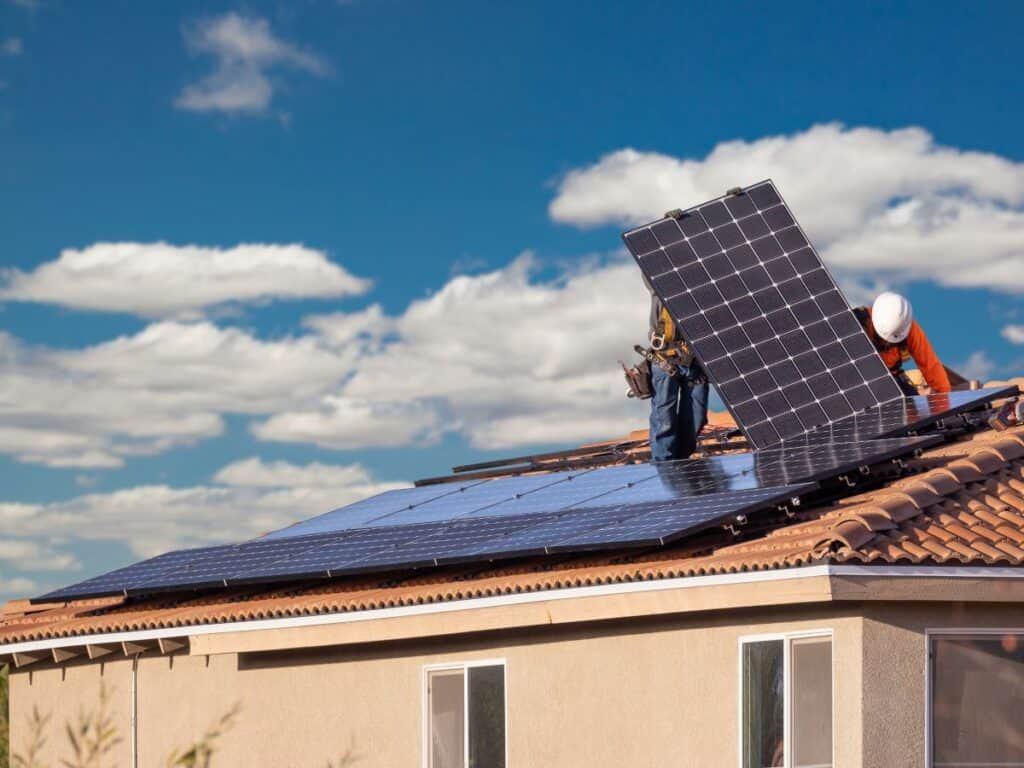
Rooftop space is a prime location, but if that’s fully utilized, you can consider other areas, such as your garage roof, a ground mount system in your yard, or even solar carport structures.
Bear in mind that any new location should have good exposure to sunlight, preferably facing south in the northern hemisphere and north in the southern hemisphere, with minimal shading throughout the day.
After identifying a suitable location, the panels can be installed and connected to your existing system.
The new panels should ideally be of a similar type and brand as the existing ones to ensure compatibility and optimal performance. However, with the use of power optimizers or microinverters, different types of panels can also be integrated into the same system.
It’s also important to consider whether your current inverter can handle the increased power output. If not, you may need to upgrade your inverter or add a second one to accommodate the extra panels.
Adding more panels not only increases your power output but can also increase your energy independence and lead to greater savings on your electricity bill.
More solar power means less reliance on grid electricity, which can be particularly beneficial if you’re in an area with high electricity costs or if you’re able to sell excess power back to the grid through a net metering program.
Adding more solar panels to your system is a potent way to enhance your solar power output.
By carefully assessing your energy needs and available space, you can expand your solar system to deliver more power, greater savings, and a higher degree of self-reliance on renewable energy.
13. Solar Panel Upgrade
Upgrading your solar panels is a significant step toward optimizing your solar power system’s performance, particularly if your current system is outdated or inefficient.
Solar panel technology has advanced considerably in recent years, offering higher efficiency, more compact designs, and improved aesthetics.
By upgrading your panels, you can harness these advances to boost your system’s power output.
Modern solar panels have higher efficiency ratings compared to older models. This means they can convert a greater proportion of sunlight into electricity.
For instance, while panels from a decade ago may have had efficiency ratings around 15-17%, today’s high-quality panels can offer efficiencies over 20%. By replacing your old panels with these more efficient models, you can generate more electricity from the same amount of sunlight, thereby increasing your system’s power output.
(Editor’s note: we have written an article that goes into more depth about the lifespan of solar panels)
The design of solar panels has also improved, with many modern panels being more compact and lightweight, yet still capable of high energy output.
This allows for more flexible installation options, and you may be able to fit more panels onto your roof, further increasing your energy production.
Some modern panels also incorporate more advanced technologies such as PERC (Passivated Emitter and Rear Cell) and bifacial designs.
PERC technology enhances a panel’s ability to capture light and convert it into electricity, while bifacial panels can generate power from both sides, capturing light reflected onto the rear of the panel as well as direct sunlight on the front.
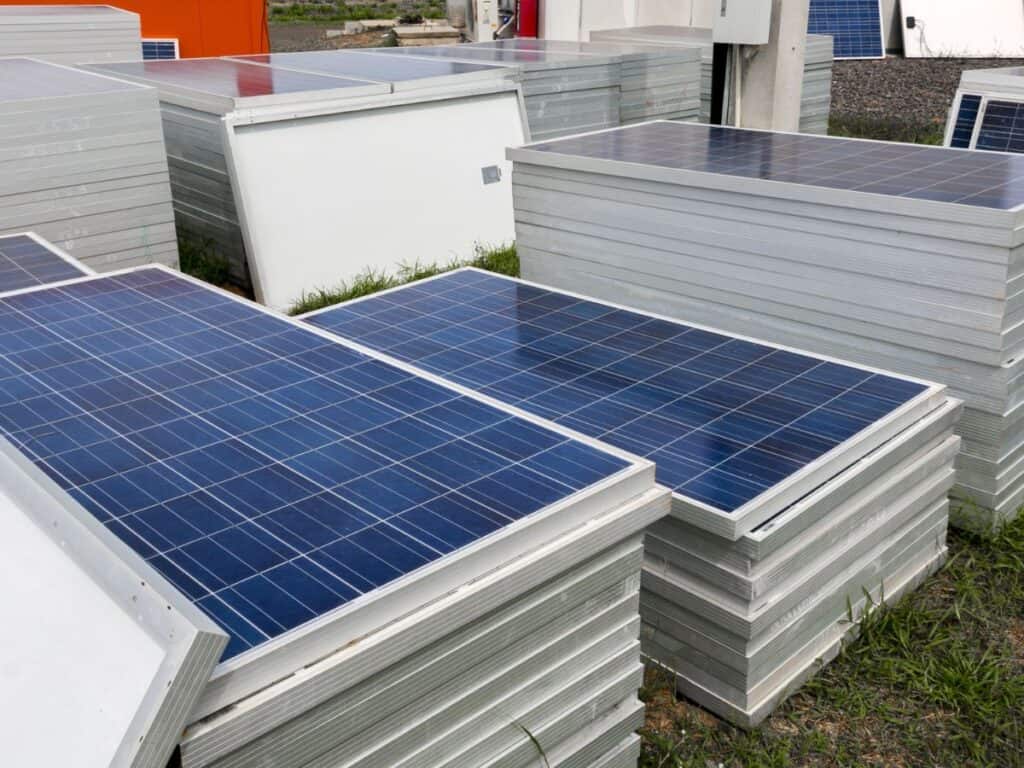
Upgrading your solar panels can also involve changing from polycrystalline to monocrystalline panels. Monocrystalline panels tend to be more efficient than polycrystalline ones, though they can also be more expensive. However, the higher upfront cost can be offset by higher energy production over the life of the panels.
Beyond the panels themselves, upgrading can also involve enhancing your system with additional technologies like power optimizers, solar trackers, or solar inverters to boost your system’s overall performance.
Lastly, an upgrade is also a chance to reevaluate your system’s installation. Professional installers can assess your home’s solar potential and may recommend changes to your panel arrangement or positioning to maximize sunlight exposure.
Upgrading your solar panels can significantly enhance your solar system’s power output.
By harnessing the latest advancements in solar technology, you can ensure your system is operating at its peak potential, providing you with greater power generation, more savings on your energy bills, and an enhanced contribution to a sustainable future.
